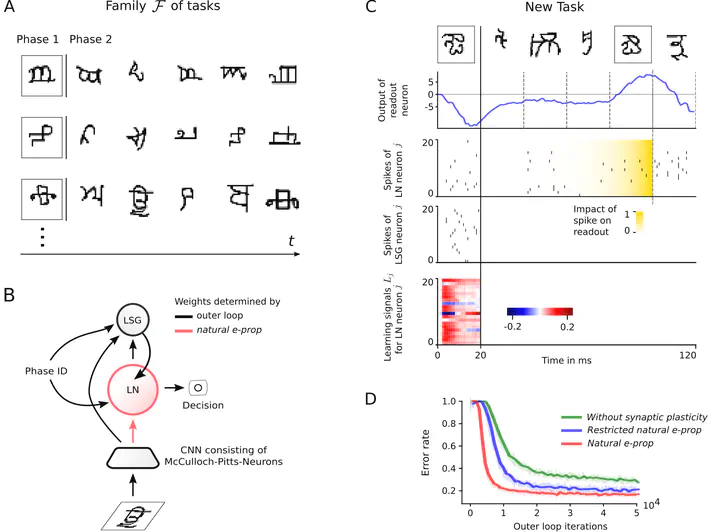 One-shot learning of Omniglot symbols
One-shot learning of Omniglot symbols
Abstract
Understanding how one-shot learning can be accomplished through synaptic plasticity in neural networks of the brain is a major open problem. We propose that approximations to BPTT in recurrent networks of spiking neurons (RSNNs) such as e-prop cannot achieve this because their local synaptic plasticity is gated by learning signals that are rather ad hoc from a biological perspective: Random projections of instantaneously arising losses at the network outputs, analogously as in Broadcast Alignment for feedforward networks. In contrast, synaptic plasticity is gated in the brain by learning signals such as dopamine, which are emitted by specialized brain areas, e.g. VTA. These brain areas have arguably been optimized by evolution to gate synaptic plasticity in such a way that fast learning of survival-relevant tasks is enabled. We found that a corresponding model architecture, where learning signals are emitted by a separate RSNN that is optimized to facilitate fast learning, enables one-shot learning via local synaptic plasticity in RSNNs for large families of learning tasks. The same learning approach also supports fast spike-based learning of posterior probabilities of potential input sources, thereby providing a new basis for probabilistic reasoning in RSNNs. Our new learning approach also solves an open problem in neuromorphic engineering, where on-chip one-shot learning capability is highly desirable for spike-based neuromorphic devices, but could so far not be achieved. Our method can easily be mapped into neuromorphic hardware, and thereby solves this problem.